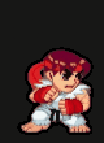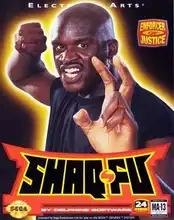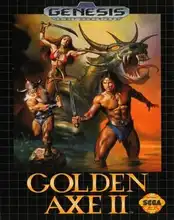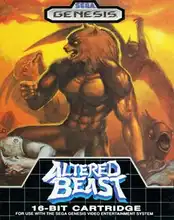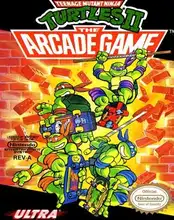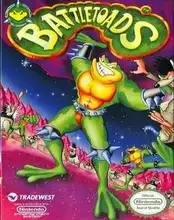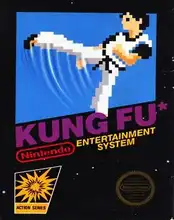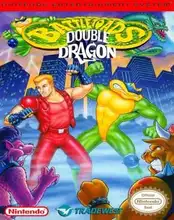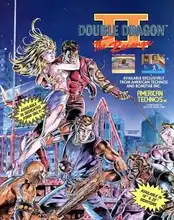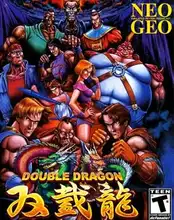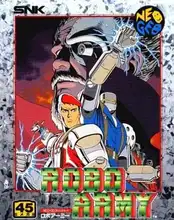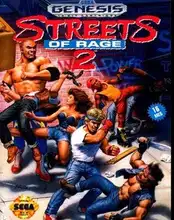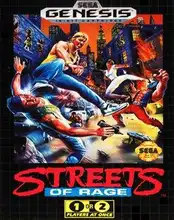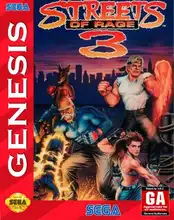Step right up! Remember the days of walking into a noisy arcade, the flashing lights, the smell of popcorn, and the rhythmic thwack of digital fists connecting with digital faces? If that image brings back a flood of memories, chances are you have a soft spot for the Beat 'em Up genre.
These games, also fondly known as brawlers, were a staple of arcades and early consoles, offering a simple, visceral thrill: walk from left to right, punch, kick, and sometimes throw hordes of bad guys until you reach the boss. It was pure, unadulterated action, often best enjoyed with a friend by your side.
What Exactly is a Beat 'em Up?
At its core, a beat 'em up is an action video game where players engage in hand-to-hand combat against numerous opponents. You're typically moving through levels, clearing screens of enemies before proceeding. While themes vary, the classic urban crime-fighting scenario is perhaps the most iconic.
Think less one-on-one duels (that's the fighting game genre, though they share DNA) and more managing a chaotic street brawl. You'd pick up pipes, knives, or even chickens off the ground, unleash simple combos, maybe a jumping attack or a screen-clearing special move, all while trying not to get mobbed.
The Golden Age: Arcade Kings and Console Champions
The genre didn't just appear out of nowhere. Games like 1984's Kung-Fu Master laid early groundwork, but it was 1986's Renegade (Nekketsu Kōha Kunio-kun in Japan) that really popularized the "belt-scroll" format – allowing movement not just left and right, but up and down the screen as well. This added a crucial dimension to the brawling.
Then came 1987, and everything changed with Double Dragon. Suddenly, the graphics were smoother, the moves felt more impactful, and most importantly, you could play the entire game cooperatively with a buddy. The adventures of Billy and Jimmy Lee rescuing Marian became a cultural phenomenon, kicking off the genre's "golden age."
The late 80s and early 90s saw a parade of legendary brawlers hitting arcades and consoles:
- Final Fight (1989): Capcom's masterpiece, featuring wrestling moves, massive sprites, and the unforgettable trio of Haggar, Cody, and Guy cleaning up Metro City.
- Golden Axe (1989): Sega's fantasy take, letting you ride beasts and unleash powerful magic spells against axe-wielding skeletons and knights.
- Streets of Rage series (early 90s): Sega's answer to Final Fight, bringing slick graphics, fantastic music (especially Streets of Rage 2), and memorable characters like Axel, Blaze, and Skate to the Genesis/Mega Drive.
- Teenage Mutant Ninja Turtles Arcade Game (1989): Konami brought the cartoon heroes to life in a colorful, four-player brawler that devoured allowance money.
These games defined the era, providing countless hours of button-mashing fun, whether you were dropping elbows from scaffolding or suplexing thugs into submission.
Beyond the Belt-Scroll: Sub-Genres and Evolution
While the classic 2D scrolling beat 'em up reigns supreme in our nostalgic hearts, the genre did evolve. The late 90s saw attempts to transition into 3D, with mixed results. Games like Die Hard Arcade had their fans, but the magic wasn't always easy to translate.
Meanwhile, the "hack and slash" sub-genre, focusing more on weapons (think Golden Axe or Gauntlet initially, evolving into 3D character action games like Devil May Cry and God of War), branched off, often featuring more complex combat systems but still sharing that core loop of fighting many enemies.
The Modern Comeback
Thankfully, the beat 'em up never truly died. Indie developers, fueled by nostalgia, have been instrumental in its revival. Games like Castle Crashers, Scott Pilgrim vs. the World: The Game, and the critically acclaimed Streets of Rage 4 (2020) have proven there's still a massive appetite for side-scrolling fisticuffs. New entries in classic series like Battletoads and spiritual successors continue to appear, blending modern design with retro sensibilities.
Reliving the Brawl: How to Play Today
Feeling that urge to clean up the streets (or dungeons, or alien planets)? The good news is, it's easier than ever to play many classic beat 'em ups:
- Digital Stores: Platforms like GOG.com offer DRM-free versions of many retro classics, often pre-configured to run on modern systems.
- Emulation: For games not commercially available, emulators combined with ROMs (be mindful of legality regarding ownership) can recreate the arcade or console experience. Tools like DOSBox are essential for many old PC brawlers. Sites like Archive.org even host browser-based arcade emulators for historical preservation.
- Modern Ports/Remakes: Many popular titles have received modern ports or full-blown remakes/sequels available on current consoles and PC.
FAQ
Q: What's the difference between a beat 'em up and a fighting game? A: Beat 'em ups focus on fighting many AI-controlled enemies as you progress through levels (e.g., Final Fight). Fighting games are typically one-on-one matches against another player or AI opponent (e.g., Street Fighter II).
Q: Are all beat 'em ups side-scrolling? A: The classic definition is usually tied to 2D side-scrolling or belt-scrolling, but the term can sometimes be used more broadly to include 3D games with similar multi-enemy combat, though these are often called 3D brawlers or character action games.
Q: Why were these games so popular in arcades? A: They offered immediate, satisfying action, were easy to understand, and the challenge encouraged players to keep inserting quarters. The co-op mode was also a huge draw, making it a social experience.
Q: What are some essential retro beat 'em ups to try? A: Double Dragon, Final Fight, Streets of Rage 2, Golden Axe, TMNT Arcade Game, The Simpsons Arcade Game.
The Legacy Lives On
The beat 'em up genre, with its simple premise and satisfying combat, holds a special place in the hearts of retro gamers. It's a genre built on pure, unadulterated fun, best shared with a friend, tackling impossible odds one punch at a time. Whether you first experienced it in a smoky arcade or on a pixelated console screen, the thrill of clearing a screen full of baddies remains timeless. Go ahead, pick up a digital pipe, and relive the glory days!
